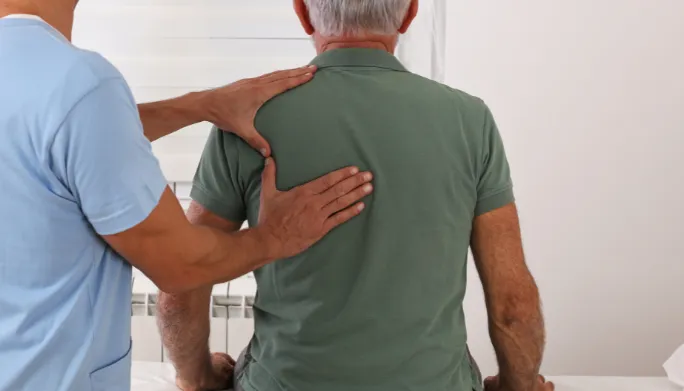Postural Realignment in Stillwater

What is Postural Realignment?
Postural realignment involves a posture evaluation, tips on how to improve your posture, and a set of exercises designed to correct it. Our physical therapists will assess your posture during each treatment session. If they determine that poor posture is contributing to your pain or other issues, postural realignment will be incorporated into your treatment plan.
The posture assessment involves identifying any tight or weak muscles that may be causing you to maintain poor posture, as well as any joint stiffness or hypermobility that could also contribute to poor posture.
Postural advice includes instructions on proper sitting and standing positioning, as well as moving and handling techniques that will help you improve your posture. This advice will be tailored to your specific needs and take into account your occupation, driving habits, and other daily activities so that you can easily incorporate them into your daily routine.
Exercises to improve posture are designed to strengthen weak muscles and stretch tight muscles that may be causing you to adopt a painful and poor posture. Additionally, exercises may be given to loosen stiff joints or provide more stability to joints that are overly mobile.
Postural Problems Treated in Stillwater
Individuals with poor posture, muscle imbalances, and pain can benefit greatly from a comprehensive postural assessment and realignment. A proper posture can improve your overall functionality and reduce pain levels.
There are several types of postural problems, including:
Kypholordosis:
An excessive curvature in the lower and upper back, which can result in weak neck, stomach, buttock, and hamstring muscles, as well as tight hip and back muscles.
Flat Back:
Which is characterized by a loss of natural curves in the back and can lead to weak hip and back muscles and tight hamstring muscles.
Sway Back:
A forward tilt of the pelvis that may cause weak hip, back, stomach, and neck muscles, as well as tight hamstrings.
Round Shoulders:
Which creates a hunched posture and can result in weak upper back muscles and tight pectoral muscles.
Lordosis:
An excessive inward curve of the spine, causing some muscles to become tight and others to become weak, depending on the location of the lordosis.
Kyphosis:
An excessive outward curve of the spine that can cause a muscle imbalance in the surrounding area.
Leg Length Discrepancies:
A difference in the overall measurements between the two legs, including true leg length due to bone length differences, and apparent leg length due to soft tissue shortening around the pelvis, legs, and ankle.
Scoliosis:
A sideways curve of the spine that can be corrected by strengthening the back muscles that support the spine.
Poking Chin Posture:
A posture that can result in neck pain and headaches due to muscle imbalances and stiffness in the neck and surrounding areas.
Benefits of Postural Realignment in Stillwater
A cycle of muscle imbalance and pain can be difficult to break without the help of physical therapy if you have poor posture. The pain caused by poor posture can make it challenging to improve your posture without professional intervention.
The benefits of postural realignment in physical therapy include:
- Alleviating pain
- Enhancing weak muscle strength
- Stretching overused muscles
- Loosening and fortifying rigid joints
- Improving overall posture
- Increasing functionality
Our team of specialists will work with you to achieve optimal posture and relieve pain. They will perform a comprehensive postural assessment and create a personalized treatment plan tailored to meet your specific needs.



